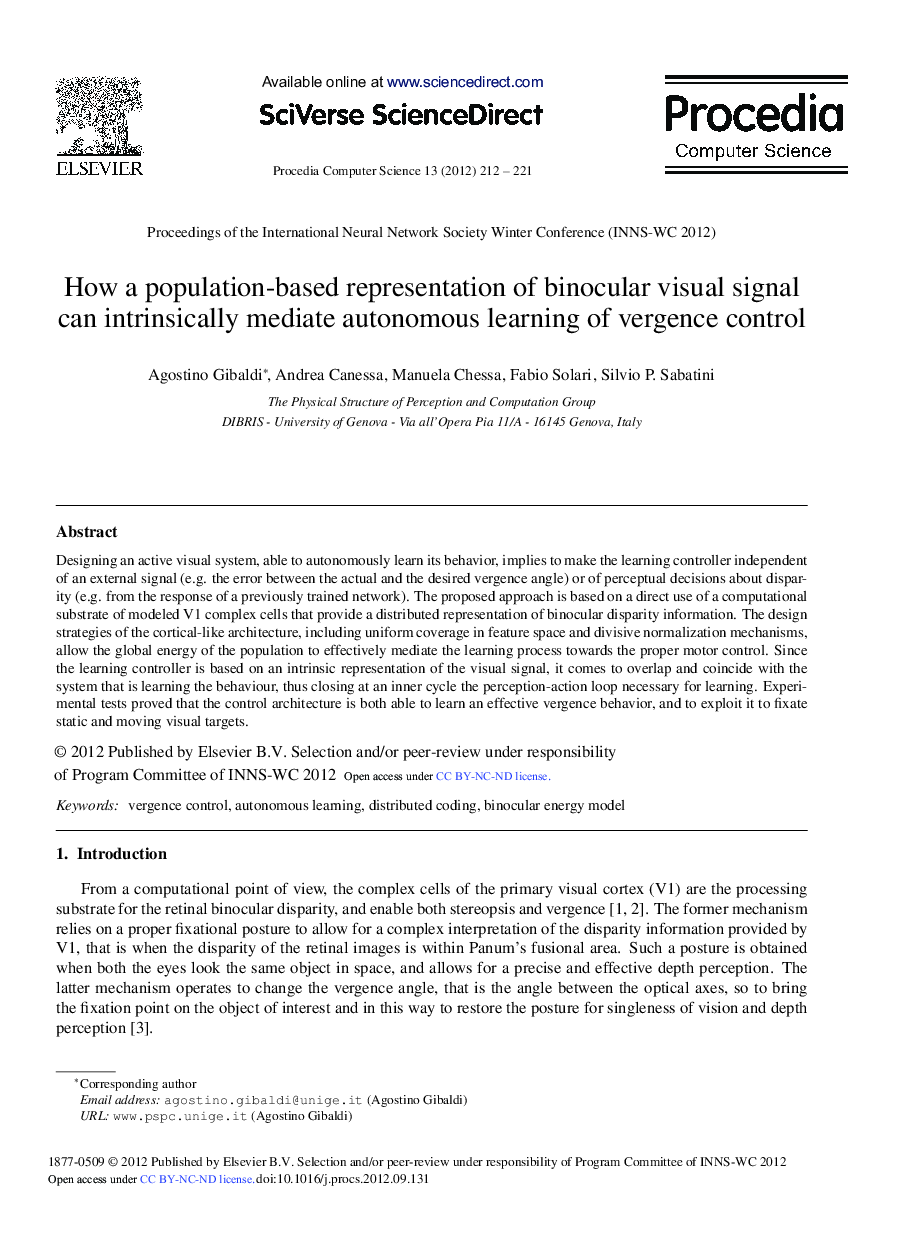| Article ID | Journal | Published Year | Pages | File Type |
|---|---|---|---|---|
| 488945 | Procedia Computer Science | 2012 | 10 Pages |
Designing an active visual system, able to autonomously learn its behavior, implies to make the learning controller independent of an external signal (e.g. the error between the actual and the desired vergence angle) or of perceptual decisions about dispar–ity (e.g. from the response of a previously trained network). The proposed approach is based on a direct use of a computational substrate of modeled V1 complex cells that provide a distributed representation of binocular disparity information. The design strategies of the cortical-like architecture, including uniform coverage in feature space and divisive normalization mechanisms, allow the global energy of the population to effectively mediate the learning process towards the proper motor control. Since the learning controller is based on an intrinsic representation of the visual signal, it comes to overlap and coincide with the system that is learning the behaviour, thus closing at an inner cycle the perception-action loop necessary for learning. Experi–mental tests proved that the control architecture is both able to learn an effective vergence behavior, and to exploit it to fixate static and moving visual targets.
